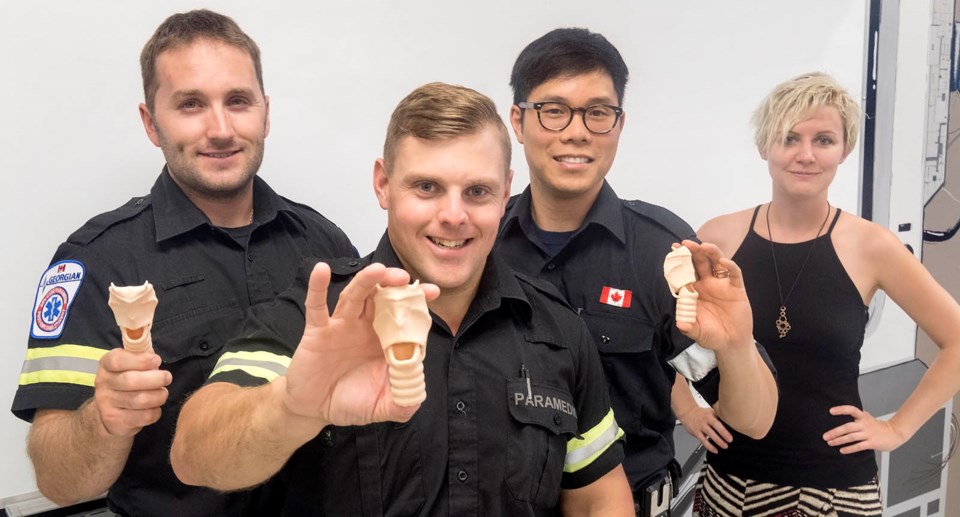NEWS RELEASE
GEORGIAN COLLEGE
*************************
Rob Theriault, a professor in Georgian’s paramedic programs, devised an innovative solution to enhance life-saving skills for his students utilizing high-tech 3D printing technology to create low-cost simulated tracheas.
“Life-saving procedures involving the trachea are a low frequency, high-risk set of skills that students need to practise frequently to stay competent,” said Theriault.
“My Advanced Care Paramedic students can even practise cricothyrotomies – a procedure that involves placing a tube through an incision in the cricothyroid membrane to establish an airway for oxygenation and ventilation – a skill they may require in emergency situations.”
Simulated tracheas are quite expensive and Theriault’s students would have to take turns practising their skills in class, so he did some research to find a solution to his student-to-trachea challenge. In reading an emergency medicine blog he discovered how to create low-cost simulated tracheas using 3D printing.
Theriault downloaded the 3D file and contacted Virginia Barlow, a Computer Programming student who works part-time as a technician in the Peter B. Moore Changemaker Space at Georgian’s Barrie Campus.
The space is home to students from across the college who collaborate on changemaking projects and start-up initiatives – and is a place to imagine, tinker and create.
Together, Theriault and Barlow created a dozen tracheas for the paramedic students.
“These simulators would probably cost between $50 and $150 each, but we were able to produce 12 for Rob’s class for less than $4 a unit,” said Barlow.
Now more of Theriault’s students can practise simultaneously and more often, allowing them to finesse their skills.
Theriault added that innovations at the maker space make these kind of learning opportunities both possible and affordable. “It’s great when faculty and students can work together on these kinds of initiatives and find solutions that enhance the learning environment for everyone. It’s a win-win partnership.”
Barlow says the changemaker space is her favourite place to be.
“I did my first co-op here in the summer and stayed on during this semester, part-time, as the technician,” said Barlow. “I’ll be returning here for my next co-op as well.
She added that students and staff are welcome to visit the space to see what they do and to use the 3D printer, laser cutter and other machines. The space can also be used for school or personal projects.
“Students create prototypes or finished products for their IOT (internet of things) year-end projects as well as parts for tech projects from their electrical courses,” said Barlow.
*************************
